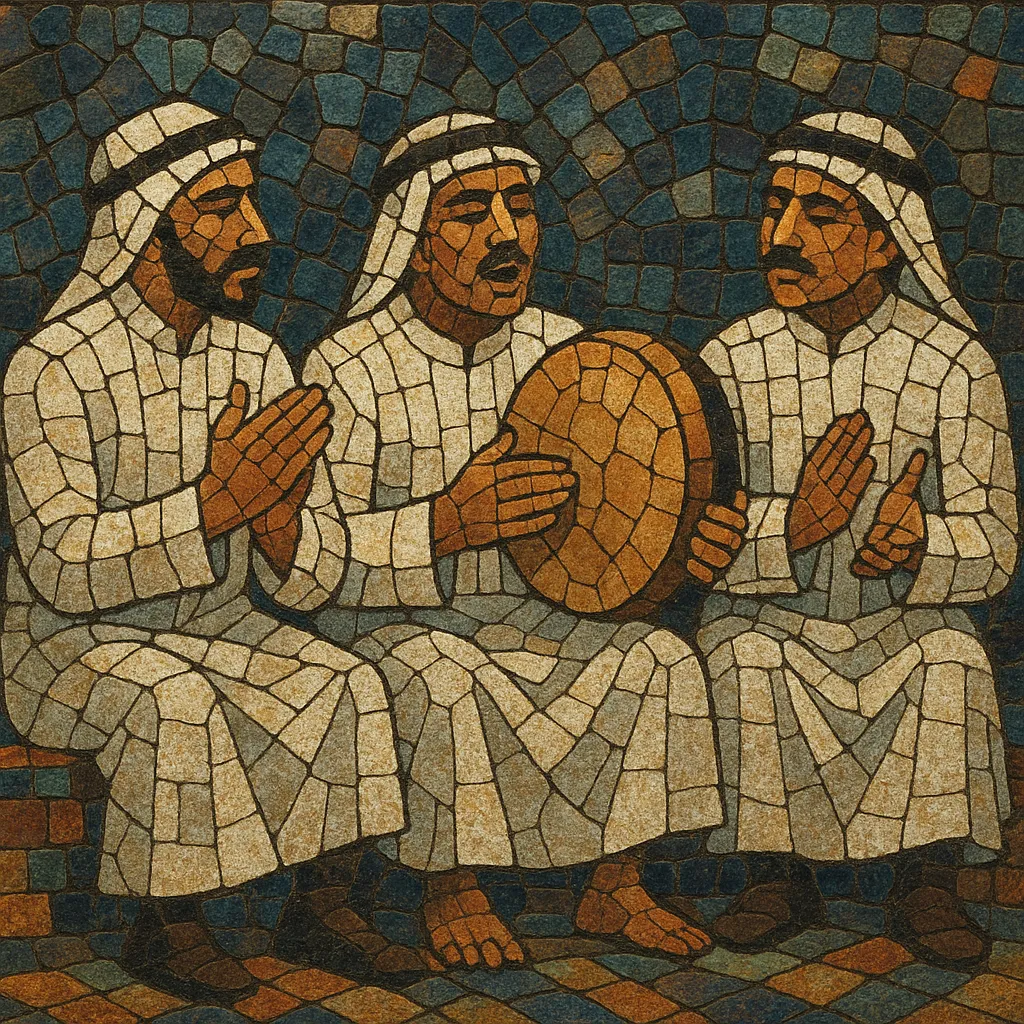Samri is a traditional Najdi (central Saudi) folk music and dance form built around sung Nabati poetry, frame-drum rhythms, and antiphonal choral responses.
It is typically performed by men seated or standing in two facing rows who clap in intricate patterns while a daff/duff (frame drum) sets a steady groove; the voices carry melodic lines in Arabic maqamat such as Bayat, Hijaz, or Kurd.
Samri is common at weddings, community celebrations, and poetry gatherings across central and eastern Saudi Arabia and parts of the wider Gulf, where its catchy two-beat swing and poetic refrains invite participatory singing and movement.
Samri crystallized in the Najd region of central Arabia, where Bedouin and town-dwelling communities cultivated Nabati (vernacular) poetry accompanied by handclaps and a frame drum. By the 1800s, gatherings in majlis settings and at weddings popularized a compact performance format: two facing rows of singers, a solo lead (qaṣīd) or caller, and a duff keeping time.
The genre centers on responsorial singing—short poetic lines are intoned by a lead voice and answered by a chorus—over a steady 2/4 pulse. The poetry ranges from love and nostalgia to praise and social commentary, reflecting Najdi aesthetics of eloquence and directness. Maqāmic melodic contours (often Bayat or Hijaz) fit naturally with the limited but expressive range of unison male chorus.
During the 20th century, urbanization and radio broadened Samri’s audience from Najd to the Eastern Province and other Gulf states. Professional ensembles standardized arrangements (multiple frame drums, organized clapping figures), while studio recordings introduced oud and light keyboards without obscuring the core chant-and-duff identity.
Today, Samri remains a hallmark of Saudi folklore showcases and weddings, and its rhythms and call-and-response templates inform modern Khaleeji pop. Cultural festivals and regional troupes preserve the seated two-row performance, while popular singers occasionally adapt Samri beats in orchestrated settings.


